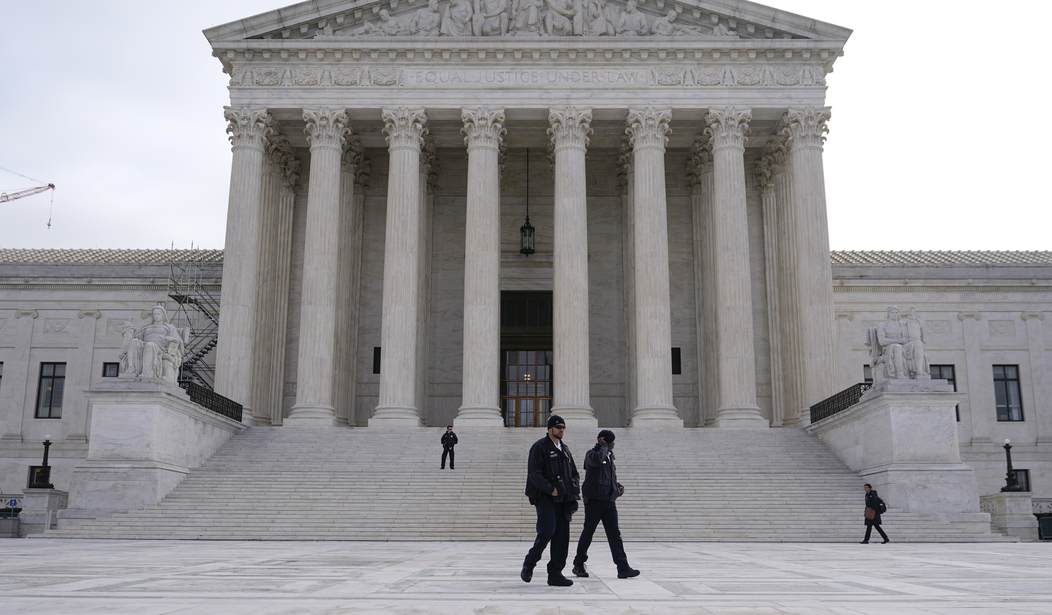Well, at least scrutiny by one Supreme Court justice. Justice Samuel Alito, who oversees emergency appeals coming out of the Fifth Circuit Court, granted a brief administrative stay last week to the Fifth Circuit’s decision halting enforcement of major portions of the ATF’s rule treating unfinished frames and receivers as if they’re completed firearms. Alito gave parties until the end of day on Wednesday to submit briefs in support or opposition to the Fifth Circuit’s decision, and we could learn as early as today whether the justice will issue a ruling himself or refer the matter to the full Court for review, though Alito’s administrative stay doesn’t expire until the end of business on Friday.
Groups on both sides of the litigation over the ATF’s rule have weighed in with briefs, and you can check them out here. Gun control groups including Everytown, Brady, and March For Our Lives are arguing that the Fifth Circuit erred in finding that the ATF’s new definition of a “firearm” oversteps its administrative authority and intrudes on Congress’s lawmaking powers, but the crux of their argument is that “ghost guns” are soaring in popularity among criminals and the ATF’s rule is vitally important in stopping “an explosion of crime and death.”
Second Amendment organizations, on the other hand, say the Fifth Circuit got it right and its decision to halt enforcement of the “frame and receiver” language should be upheld by the Supreme Court, or, failing that, the appellate court’s decision should be stayed only if the Supreme Court grants cert and addresses the rule itself.
In its brief, the Firearms Policy Coalition (along with plaintiffs Polymer 80, Tactical Machining, Jennifer VanDerStock, and Michael Andren) uses a very vivid example of why, exactly, the ATF’s claim that incomplete frames and receivers or “buy, build, shoot” kits should not be treated as firearms. The DOJ contends that those kits are the equivalent of buying a bookshelf from IKEA; yes, you might have to assemble it yourself, but you knew you still purchased a bookshelf. The FPC, on the other hand, points to an item found in your local grocery store as a better comparison.
… an IKEA bookshelf is shipped with all the completed parts necessary to construct a bookshelf, whereas a parts kit requires additional manufacturing on the key component to become a firearm.
A better analogy would be to a “taco kit” sold as a bundle by a grocery store that includes taco shells, seasoning packets, salsa, and other toppings, along with a slab of raw beef. No one would call the taco kit a taco. In addition to “assembly,” turning it into one would require cutting or grinding and cooking the meat—and until that was done, it would be nonsensical to treat it as food and the equivalent of a taco. For this same reason, the Government is wrong to suggest there is anything “illogical” about the district court’s conclusion that “disassembled” weapons are firearms but never-before-assembled part kits necessarily missing a frame or receiver are not. A disassembled firearm—which at one time was a functioning firearm—has all the components (including a finished frame or receiver) necessary to be quickly rendered a firearm. To continue the analogy, it is like leftovers from taco night that have been stored in separate containers in the refrigerator but that could be quickly turned back into tacos for lunch the next day. Treating a disassembled weapon as a firearm creates no conflict with the Act’s insistence that only firearms with completed frames should be regulated. Extending that same analysis to a “Buy Build Shoot” kit, on the other hand, does create a conflict with the plain text of the statute and the district court was right not to countenance it.
The brief from the Second Amendment Foundation, Defense Distributed, and JSD Supply also touches on the DOJ’s IKEA comparison, arguing that the government’s arguments are not sufficient, and only because “the Bill of Rights contains no constitutional right to keep and bear bicycles or IKEA bookshelves.”
Unlike these bare, context-free hypotheticals, Congress legislated in a constitutional and statutory context that sheds important light on the “firearm” term’s meaning.
The government’s position often boldly equates the minimal act of firearm “assembly”1 with the distinct and more involved acts of firearm production and manufacturing, such as “drilling holes” and “removing plastic rails.” The “assembled” term—a term of supposedly substantial expansion—is the government’s way of making the statute go so far. But context shows that Congress does not use the word “assembled” to do nearly so much work.
When Congress wants to cover both the minimal step of item “assembly” and more involved conduct like item “completion” or item “production” or item “manufacturing,” it says the latter expressly. See 19 U.S.C. § 2703 (regulating “production, manufacture, or assembly”). Since Congress here spoke only of parts from which a firearm can be readily “assembled”—not parts from which a firearm can be readily “produced” or “manufactured” or “completed”—the statute cannot be defined to cover the latter. Yet the Rule does just that. Even though virtually all kits and unfinished frames and receivers entail the latter, more involved, conduct, the Rule sweeps them in indiscriminately. Instead of giving the “assembled” notion a limiting function, the government says (at 19) that the statute covers anything that can be “completed, assembled, restored, or otherwise converted” into a firearm. That kind of contradiction is precisely what meaningful APA review should thwart.
Both the FPC and SAF briefs contend that if Congress had wanted to include items that might become “firearms” under the Gun Control Act’s definition, that body should and could have expressly said so. Instead, the GCA is absent any such language, and for decades the ATF’s guidance was that incomplete frames and receivers were not firearms under the GCA. From the FPC brief:
The Government’s claim that its new definition of “frame or receiver” is “consistent with ATF’s longstanding interpretation and implementation of the Act” is historical revisionism. In support of this claim, the Government cites a handful of letters—three from the 1970s and 1980s and one sent just months before ATF began the process of promulgating the rule at issue here. In fact, until now ATF has consistently taken the position that these newly regulated items fall outside the scope of the Gun Control Act. See Are “80%” or “unfinished receivers illegal?, ATF, https://bit.ly/3OEDgFt (last visited Aug. 1, 2023). Indeed, just months before the Rule was proposed ATF took that position in litigation:
the ‘designed to’ and ‘readily be converted’ language are only present in the first clause of the statutory definition [of firearm]. Therefore, an unfinished frame or receiver does not meet the statutory definition of a ‘firearm’ simply because it is ‘designed to’ or ‘can readily be converted into’ a frame or receiver. Instead, a device is a firearm either: (1) because it is a frame or receiver or; (2) it is a device that is designed to or can readily be converted into a device that ‘expel[s] a projectile by the action of an explosive.’
Fed. Defs.’ Mem. of Law in Support of Mot. for Summ. J., Doc. 98 at 5, Syracuse v. ATF, No. 1:20-cv-06885 (S.D.N.Y. Jan. 29, 2021). The classification letters cited by the Government—which focused on the question of whether a frame or receiver had been sufficiently machined to meet the former definition—are consistent with the ATF’s “several decades” of “focus[ing] on the degree of machining a device has undergone (and hence its degree of completeness),” but utterly inconsistent with ATF’s new policy of asking whether an item is intended to or could become a frame or receiver.
Given that the ATF’s position has, for decades, been that unfinished frame and receivers do not meet the statutory definition of a “firearm”, the plaintiffs in VanDerStock argue that vacating the rule merely keeps the status quo in place, while allowing it to be enforced while the litigation continues would provide irreparable harm, not only to the named plaintiffs, but countless Americans who want to exercise their right to privately manufacture a firearm.
With the Fifth Circuit also hinting this week that a nationwide injunction against the Biden administration’s rule on stabilizing braces is on the table, the Supreme Court could soon get another chance to put the executive overreach on the part of the DOJ and ATF in check. What happens with VanDerStock will give us a much clearer picture of how the Court intends on handling these executive branch abuses, and with Alito’s administrative stay expiring tomorrow afternoon we hopefully won’t have too long to wait before we get a sense of where the Court is headed.









Join the conversation as a VIP Member